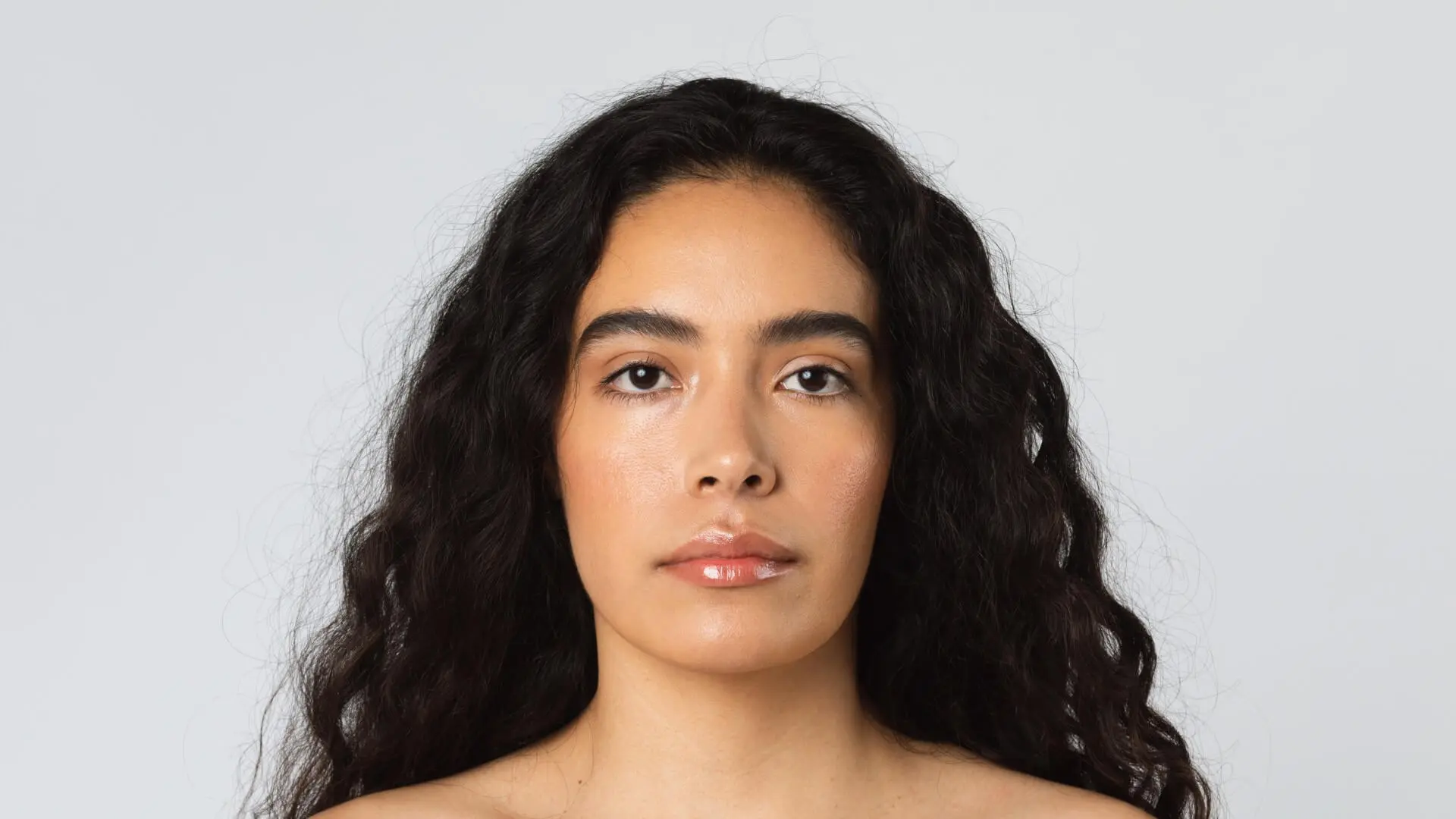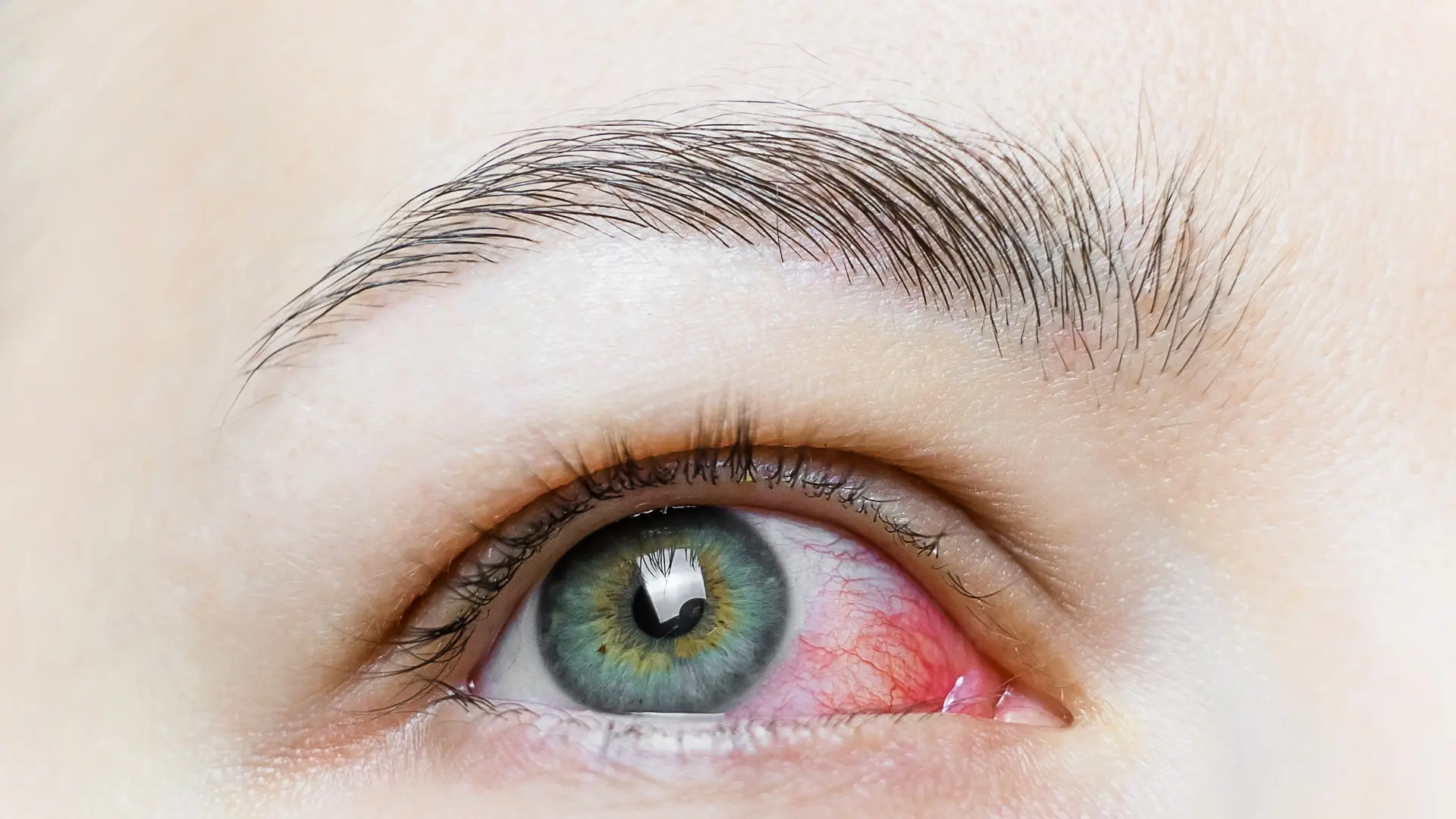Hair holds a lot of value for women. In many cultures, hair is seen as a symbol of a woman’s beauty. In fact, many women place heavy importance on haircare to make sure their hair is the healthiest it can be. Keeping all this in mind, it is obvious that hair loss for women can be a massive source of anxiety. If a woman loses over 125 hairs each day, this is considered hair loss, which can lead to extreme hair thinning and even bald spots. Keep reading to find out more about the causes of hair loss in women and when a hair transplant can be the best solution for women.
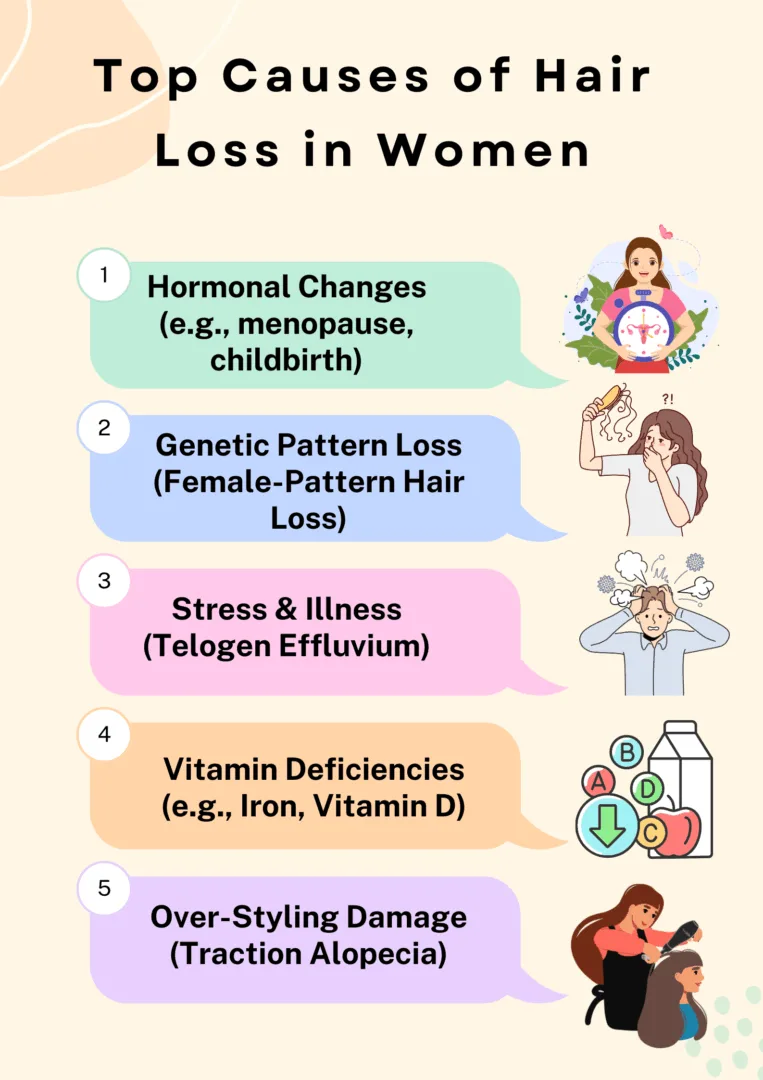
👩 Hormonal Causes of Hair Loss in Women
Hormonal balance is essential to have thick and healthy hair. However, when pregnancy or menopause causes a woman’s estrogen levels to decrease, it causes a lot more hair follicles to shift to the “resting phase,” which can lead to shedding and thinning. This is how a simple hormonal imbalance can become one of the causes of female hair loss.
Menopause & Estrogen Decline
All women go through menopause, which involves drastic hormonal fluctuations. A few of the physical symptoms of menopause include hot flashes, insomnia, etc. In addition, it also causes hormonal hair loss in women. Menopause causes a decline in the hormones estrogen and progesterone (which are responsible for hair growth), and the reduced hair growth causes the hair to enter the resting phase much earlier. Resultingly, this disruption in the growth cycle makes the hair lose its thickness and volume.
📍Moreover, as estrogen decreases, there is also a boost in androgens, which can lead to the shrinking of follicles and thinner hair.
Postpartum Hair Shedding
Postpartum hair loss is a part of the pregnancy process and takes place about 3 months after childbirth. However, this condition is not permanent and only lasts about 6 months. The primary reason for this is the hormonal imbalance that takes place during and after childbirth.
Also referred to as telogen effluvium, the postpartum hair loss is caused by the pregnancy hormones. These hormones cause hair that is in the anagen or growth phase to quickly enter the telogen or resting phase. This hair begins to fall out a few months later.
Another type includes the Chronic Postpartum hair loss, where the hair shedding is much more extreme and extends beyond the first year after childbirth.
📍 Chronic Postpartum hair loss indicates an underlying health issue, which is why it is essential to consult a healthcare professional to get a proper diagnosis and treatment.
Polycystic Ovary Syndrome (PCOS)
Women who have PCOS or Polycystic Ovary Syndrome have excess androgens. This hormonal imbalance causes their hair to become dry and thin out due to shedding. In fact, PCOS causes androgenetic alopecia or female-pattern hair loss in women.
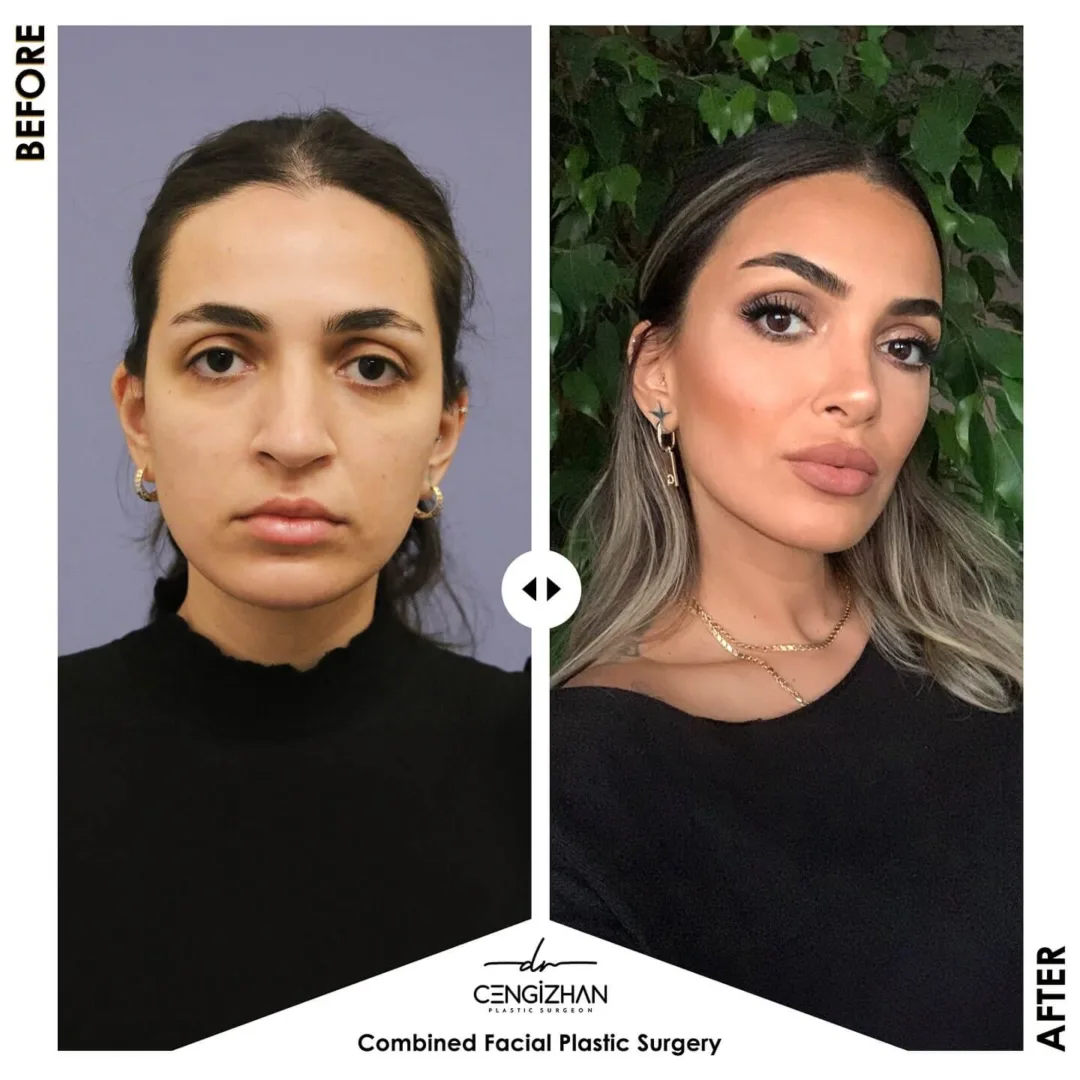
👩 Genetic & Medical Causes of Hair Loss in Women
Female Pattern Baldness (Androgenetic Alopecia)
Aging and genetics are 2 important factors that cause Androgenetic Alopecia or female pattern hair loss. In this condition, the hair at the top of a woman’s head becomes thinner, causing the part to become wider. Some people genetically have hair follicles sensitive to the DHT hormone, which causes the hair follicles to shrink. This eventually results in the hair growing thinner and thinner with each cycle. There comes a point where the follicle shrinks so much that it stops producing hair.
Thyroid Disorders (Hypothyroidism/Hyperthyroidism)
The thyroid hormone regulates the body’s metabolism, which heavily affects the hair follicle’s growth cycle as well. Thyroid disorders, such as Hypothyroidism and Hyperthyroidism, involve an imbalance of the thyroid hormone, which affects our body’s system, pushing the hair follicles into the resting phase. All this hair in the resting phase begins to shed a few months later.
Autoimmune Conditions (Alopecia Areata)
In an autoimmune condition such as Alopecia Areata, the human body attacks its own hair follicles, which causes widespread hair loss. Additionally, the hair loss on the scalp is usually patchy, while Alopecia Areata also causes hair loss on other parts of the body.
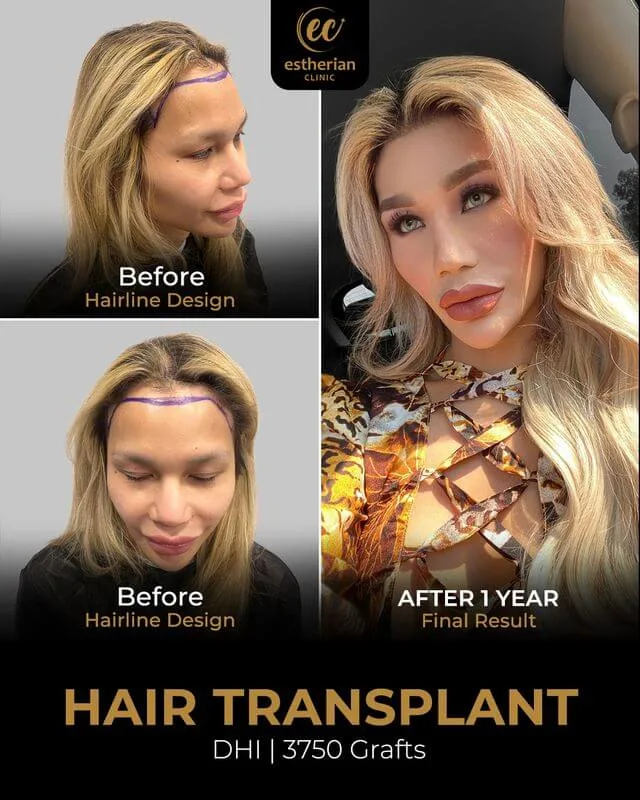
👩 Lifestyle & Environmental Factors
Chronic Stress & Telogen Effluvium
Stress causes telogen effluvium, in which a large number of the hair follicles suddenly enter the resting phase. After some time, all this hair begins to suddenly shed.
Nutritional Deficiencies
The hair follicles need nutrients for the hair to grow healthy and thick. These nutrients can only be acquired through a nutritional diet. A poor diet can lead to several nutritional deficiencies (proteins, vitamin B, and iron), which could adversely impact one’s hair. It can starve the follicle of important nutrients, which can disturb the growth cycle, pushing a bulk of the hair to the resting and shedding phases much earlier.
Overstyling & Traction Alopecia
Traction alopecia is a type of hair loss that is caused by the routine styling of hair, which causes tension on the hair follicles. Whether it be the regular use of hot tools or tight hairstyles like braids or extensions, they all result in the hair being pulled too much and eventually falling out due to tension.
💇♀️ When Is a Hair Transplant the Right Solution?
A hair transplant is the best treatment for women’s hair thinning. However, this works only when they have a certain type of thinning. For instance, a hair transplant may not work for women who have diffuse hair loss. When the hair loss is localized, meaning that it is stable and is present in a defined area, it can make that person a good candidate for a hair transplant.
Furthermore, the female candidate for a transplant should also have thick and dense hair in their donor areas, which are usually either the back or sides of the scalp.
It should also be pointed out that a hair transplant may not be the right choice for women who have an active autoimmune condition or other untreated illness.
📍 Your specialist will carry out a detailed evaluation of your scalp condition and the type of hair loss you have to determine whether you are a good candidate for a hair transplant.


